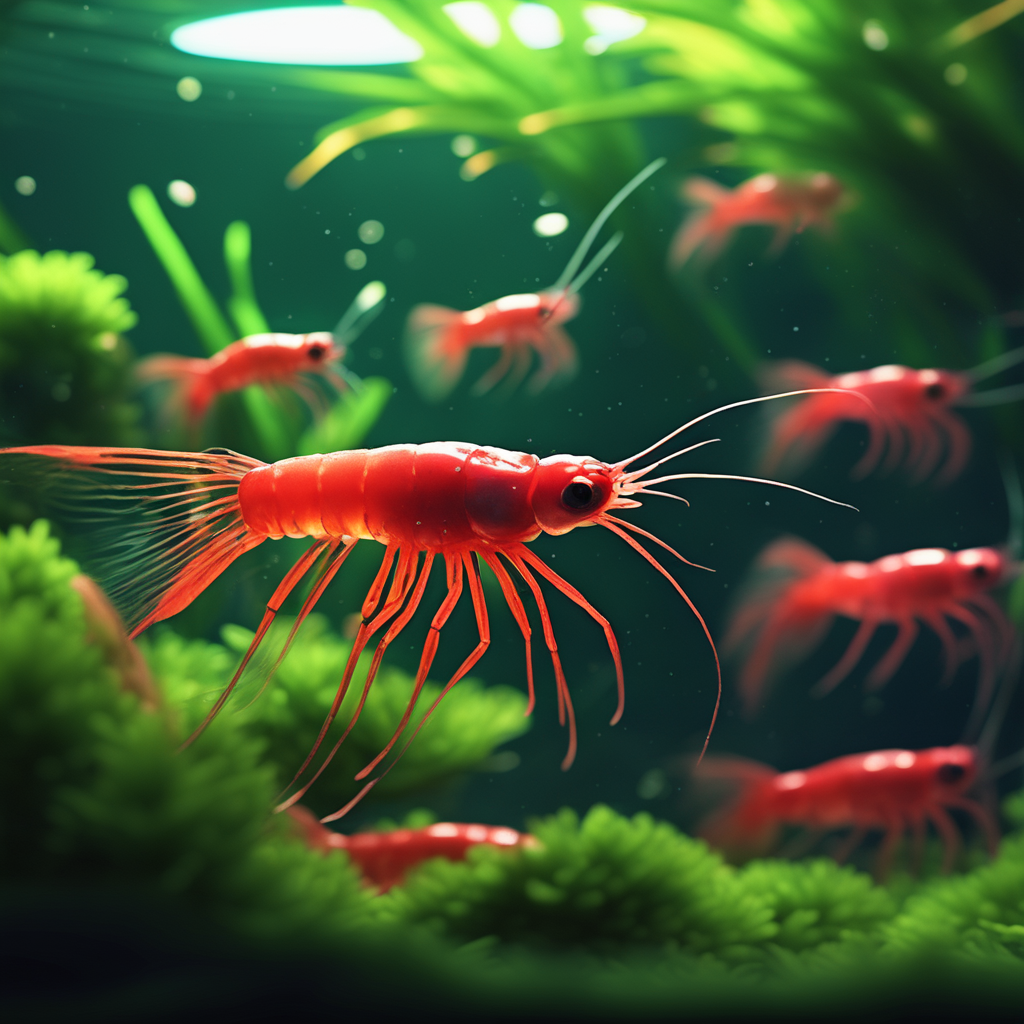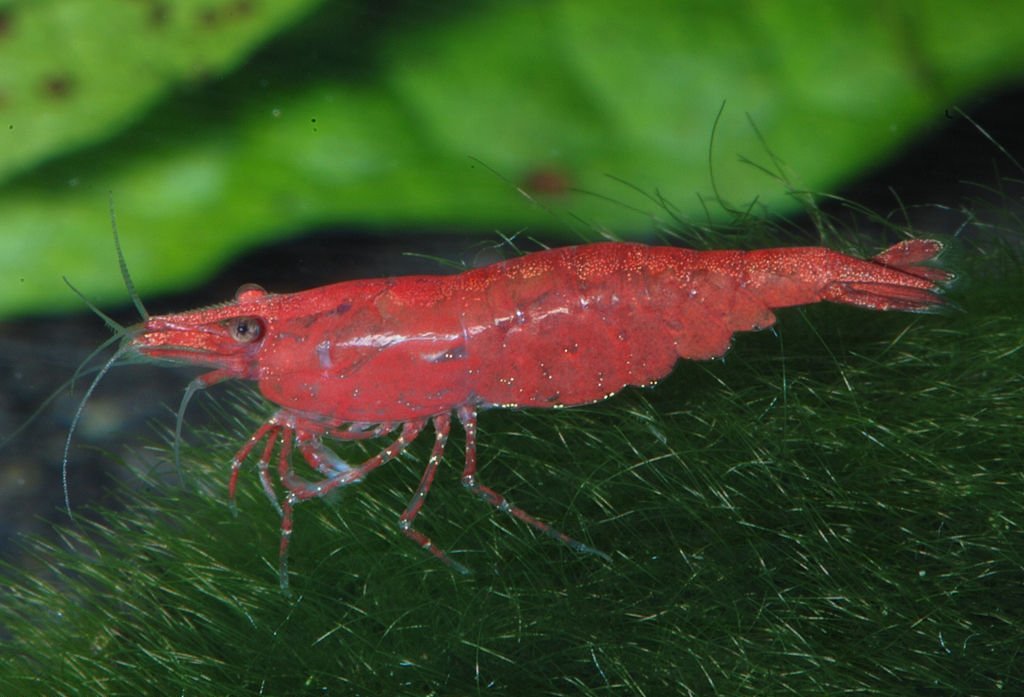Are you interested in keeping vibrant, eye-catching shrimp in your aquarium? Look no further than the Cherry Red Shrimp! These tiny crustaceans boast a deep red coloration that is sure to catch your eye.
With their active nature and hardy disposition, they make an excellent addition to any freshwater tank. In this article, we will explore the anatomy, habitat requirements, feeding habits, and breeding characteristics of the Cherry Red Shrimp.
Get ready to dive into the fascinating world of these delightful aquatic creatures!
Quick Facts:
- Cherry red shrimp, also known as Neocaridina heteropoda var. cherry, are a popular freshwater aquarium shrimp species.
- These shrimp have vibrant red coloration, which is their most distinctive feature and the reason for their name.
- They are native to Taiwan and southern China but are now bred in captivity worldwide.
- Cherry red shrimp have become highly popular among aquarists due to their ease of care and breeding.
- They are relatively small in size, typically reaching around 1 inch (2.5 centimeters) in length.
- In order to thrive, cherry red shrimp require a well-established aquarium with clean water parameters and plenty of hiding places like plants or decorations.
- Their diet primarily consists of biofilm, algae, and organic detritus found on surfaces in the tank. However, they can also be fed commercial shrimp pellets or blanched vegetables like spinach or zucchini.
- These shrimps reproduce readily in captivity. Females carry eggs underneath their abdomens until they hatch into miniature versions of adults called nymphs. The offspring reach maturity within a few months.
- Cherry red shrimp provide certain benefits to an aquarium ecosystem by cleaning up excessive food waste and helping control algae growth.
- Though generally peaceful towards other tank inhabitants such as fish or snails, cherry red shrimps can be preyed upon by larger or aggressive species if not provided with adequate shelter.
Anatomy and Physical Characteristics
You’ll notice the cherry red shrimp’s distinctive coloration and small size.
The cherry red shrimp, also known as Neocaridina davidi, exhibits vibrant shades of red, ranging from deep crimson to bright cherry. This coloration is due to the presence of pigments called carotenoids, which are derived from their diet.

Interestingly, there are variations in color patterns within this species, including solid red, striped, and even speckled patterns.
As for their size, adult cherry red shrimp typically reach a length of around 1 to 1.5 inches.
In terms of lifespan and growth rate, these shrimp have a relatively short lifespan of around 1 to 2 years. Their growth rate is influenced by factors such as water quality, temperature, and food availability.
With proper care, cherry red shrimp can thrive and reproduce in captivity.
Habitat and Tank Requirements
To provide a suitable living environment for cherry red shrimp, it’s important to maintain a tank with appropriate water parameters and plenty of hiding places. These small freshwater crustaceans require specific conditions to thrive and display their vibrant colors. Here are some guidelines to ensure their well-being:
- Tank Decoration:
- Provide live plants, such as Java moss or water lettuce, for the shrimp to graze on and seek shelter.
- Add driftwood or rocks to create natural hiding spots and mimic their natural habitat.
- Avoid sharp or rough decorations that could harm their delicate bodies.
- Water Parameters:
- Maintain a temperature between 72-78°F (22-25°C) for optimal growth and breeding.
- Keep the pH level around 6.5-7.5, as cherry red shrimp prefer slightly acidic to neutral conditions.
- Ensure proper water filtration and regular water changes to maintain water quality.
Feeding and Diet
Maintaining a balanced diet is crucial for the health and well-being of these vibrant crustaceans. Cherry red shrimp, also known as Neocaridina heteropoda, have specific feeding habits and nutritional requirements that must be met in order to ensure their optimal growth and development.
These shrimp are primarily herbivores, feeding on algae, plant matter, and biofilm. They’re also known to scavenge for small particles of food in their environment. It’s important to provide a diverse diet that includes a mix of high-quality pellets, vegetables, and protein-rich foods such as brine shrimp or bloodworms.
Additionally, cherry red shrimp require a sufficient supply of calcium to support their molting process. Providing a well-balanced diet that meets their nutritional needs is essential for the long-term health and vibrant colors of these fascinating crustaceans.

Reproduction and Breeding
When breeding these vibrant crustaceans, it’s important to create the right conditions for successful reproduction. The mating behavior and courtship rituals of cherry red shrimp are fascinating to observe. Here are some key points to consider:
Mating Behavior and Courtship Rituals:
- Male cherry red shrimp will typically initiate the courtship process by performing an elaborate dance to attract the female.
- The male will then present the female with a spermatophore, which contains his sperm.
- The female will carefully inspect the spermatophore before accepting it.
- Once the spermatophore is accepted, the female will release her eggs and the male will fertilize them.
Optimal Water Conditions for Successful Breeding:
- The water temperature should be maintained between 72-78 degrees Fahrenheit.
- The pH level should be around 6.5-7.5.
- It’s crucial to ensure clean water with minimal ammonia and nitrate levels.
Common Diseases and Health Issues
To ensure the health of your vibrant crustaceans, it’s important to be aware of common diseases and potential health issues. Prevention and treatment are key in maintaining the well-being of your cherry red shrimp.
One common disease that can affect them is the dreaded ‘cherry shrimp disease.’ Symptoms include a loss of color, decreased appetite, and lethargy.
Another health issue to watch out for is the ‘white spot disease,’ characterized by small white spots on the shrimp’s body. It’s crucial to quarantine any affected individuals and treat them with appropriate medications to prevent the spread of the disease.
Additionally, monitor your shrimp for signs of bacterial infections such as redness, swelling, and open wounds.
Providing clean water, a balanced diet, and maintaining optimal water parameters are essential for preventing these diseases and keeping your cherry red shrimp healthy.
In conclusion, the cherry red shrimp is a fascinating species with unique anatomy and physical characteristics.
They thrive in specific tank conditions, requiring careful attention to water parameters and the provision of suitable hiding places.
Their diet consists mainly of algae and biofilm, and their reproductive process involves intricate mating rituals.
Although they’re generally hardy, cherry red shrimp may be susceptible to certain diseases and health issues.
Overall, understanding the intricacies of this species is crucial for maintaining their optimal health and well-being.

